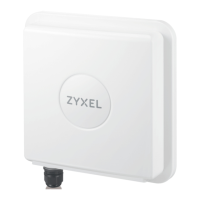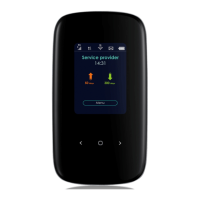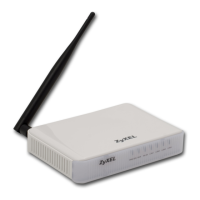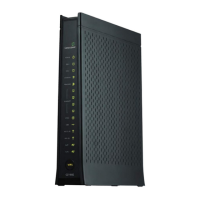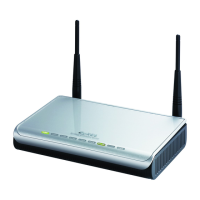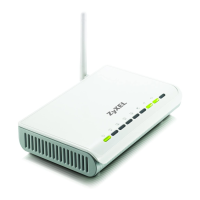Chapter 14 Firewall
LTE3301-M209 User’s Guide
107
The following table describes the labels in this screen.
Table 49 Security > Firewall > Services
LABEL DESCRIPTION
ICMP Internet Control Message Protocol is a message control and error-reporting protocol between
a host server and a gateway to the Internet. ICMP uses Internet Protocol (IP) datagrams, but
the messages are processed by the TCP/IP software and directly apparent to the application
user.
Respond to Ping
on
The Zyxel Device will not respond to any incoming Ping requests when Disable is selected.
Select LAN to reply to incoming LAN Ping requests. Select WAN to reply to incoming WAN Ping
requests. Otherwise select LAN&WAN to reply to all incoming LAN and WAN Ping requests.
Apply Click Apply to save the settings.
WAN Stealth Mode
Enable WAN
Stealth Mode
Select this check box to silently discard the matched packets without sending a TCP reset
packet or an ICMP destination-unreachable message to the sender.
Apply Click Apply to save the settings.
Enable Firewall Rule
Enable Firewall
Rule
Select this check box to activate the firewall rules that you define (see Add Firewall Rule
below).
Apply Click Apply to save the settings.
Add Firewall Rule
Service Name Enter a name that identifies or describes the firewall rule.
MAC Address Enter the MAC address of the computer for which the firewall rule applies.
Dest IP Address Enter the IP address of the computer to which traffic for the application or service is entering.
The Zyxel Device applies the firewall rule to traffic initiating from this computer.
Source IP Address Enter the IP address of the computer that initializes traffic for the application or service.
The Zyxel Device applies the firewall rule to traffic initiating from this computer.
Protocol Select the protocol (TCP, UDP or ICMP) used to transport the packets for which you want to
apply the firewall rule.
Dest Port Range Enter the port number/range of the destination that define the traffic type, for example TCP
port 80 defines web traffic.
Source Port Range Enter the port number/range of the source that define the traffic type, for example TCP port
80 defines web traffic.
Add Rule Click Add to save the firewall rule.
Firewall Rule
# This is your firewall rule number. The ordering of your rules is important as rules are applied in
turn.
Service Name This is a name that identifies or describes the firewall rule.
MAC address This is the MAC address of the computer for which the firewall rule applies.
Dest IP This is the IP address of the computer to which traffic for the application or service is entering.
Source IP This is the IP address of the computer from which traffic for the application or service is
initialized.
Protocol This is the protocol (TCP, UDP or ICMP) used to transport the packets for which you want to
apply the firewall rule.
Dest Port Range This is the port number/range of the destination that define the traffic type, for example TCP
port 80 defines web traffic.
Source Port Range This is the port number/range of the source that define the traffic type, for example TCP port
80 defines web traffic.

